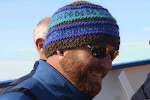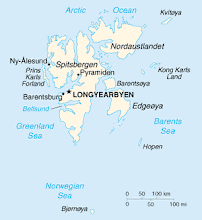
Arctic Cottongrass Eriophorum scheuchzeri The quintessential tundra plant, this furry little grass is like rabbit fur against the skin. Ripened seeds float off on the breeze, like our dandelions and cattails. And, like those plants, is found in large clumps everywhere, but especially in Longyearbyen village where it's more fertile and protected.

Mountain Sorrel Oxyria digyna The leaves have a fresh aciduous taste and are rich in Vitamin C. They were uesd by locals to prevent scurvy and are great in salad. Grows in wet places and is common all over Svalbard.

Drooping Saxifrage Saxifraga cernua I found this little gem last evening, growing out of construction rubble in Longyearbyen village behind a row of shops.

Buttercup Ranunculus, but which species? Impossibly yellow and stunted. The backdrop gives you an idea of where many of these flowers are perched, high enough to grab every bit of sunlight available in their short seasons.

Moss Campion Silene acaulis Displays 'compass flowering,' developing flowers on the southern facing part of the cushion first. Enjoys a long flowering season and is found all over Svalbard.

Purple Saxifrage Saxifraga oppositifolia A sure sign of spring, it's the first to bloom and last to fade. Common all over Svalbard. Grows in North Greenland, at 83 15', the most northerly plant locality in the world.

Svalbard Poppy Papaver dahlianum Comes in yellow and white, considered the 'national' flower of Svalbard.

Mountain Avens Dryas octopetala
Here's a sampling of the tough little tundra plants thriving in the scree and rock rubble of the arctic tundra's moraine. Generally, they tend to have a sturdy taproot extending down to the permafrost, about 10cm below.
They thrive nearest bird colonies, rich in nutrients. Low bacterial action in the soil makes this region otherwise deficient in phosphates, nitrates and other essential salts.
One strong factor contributing to the abundance of these plant forms is the dwindling of the Gulf Stream as it pushes northward, snaking along the Norwegian coast and up into the northern reaches on the west side of the Svalbard Archipelago. The presence of the Gulf Stream creates a more temperate climate and is known as mild arctic-oceanic.
Most of these species propagate in several ways. Seeds, obviously, but also by means of bulbils, underground runners and viviparous flowers.
There are forms here I've recognized by their leaves. For instance the poppy, which in these parts has the distinction of being named the Svalbard Poppy, considered the 'national' flower of Svalbard.
Another are the many saxifrages. The leaves are so obvious yet stunted, they stopped me dead in my tracks. Other recognizables include lychnis, buttercup, Jacob's Ladder and dandelion (!)...all very tiny and dwarf.
The only 'trees' here are a willow and a birch yet they're so low to the ground and the leaves so tightly packed and stunted they're barely recognizable.
It's become a secondary highlight of the trip for me, learning, recognizing and identifying the various flowering plant species. First and most obvious of course are the presence of the polar bears.
Photo Credits:
Buttercup, Phil Wickens
Mountain Avens, Rolf Stange
~Anything and everything you ever wanted to know about Svalbard can be found in Rolf Stange's incredible book: Spitsbergen - Svalbard. Or check out his website. He's a veritable font of knowledge, very approachable and down-to-earth friendly. What he's accomplished in his short lifetime is an inspiration.
~Phil is my amazing co-worker, a superb geologist, mountaineer, historian, plant fancier, photographer, downloader of ice maps, gun and zodiac handler and all-around nice guy. Friendly and cheerful beyond measure. (And he looks great in drag.) Find his photo at left.
Other photos: various passengers, including S. Boyes.
Click on FLOWERS OF SVALBARD for complete listings and gallery. Wait 'til you see the arctic Jacaob's Ladder!














1 comment:
Interesting to see the same species of flowers on Baffin Island, so far from the isolation of Svalbard.
Post a Comment